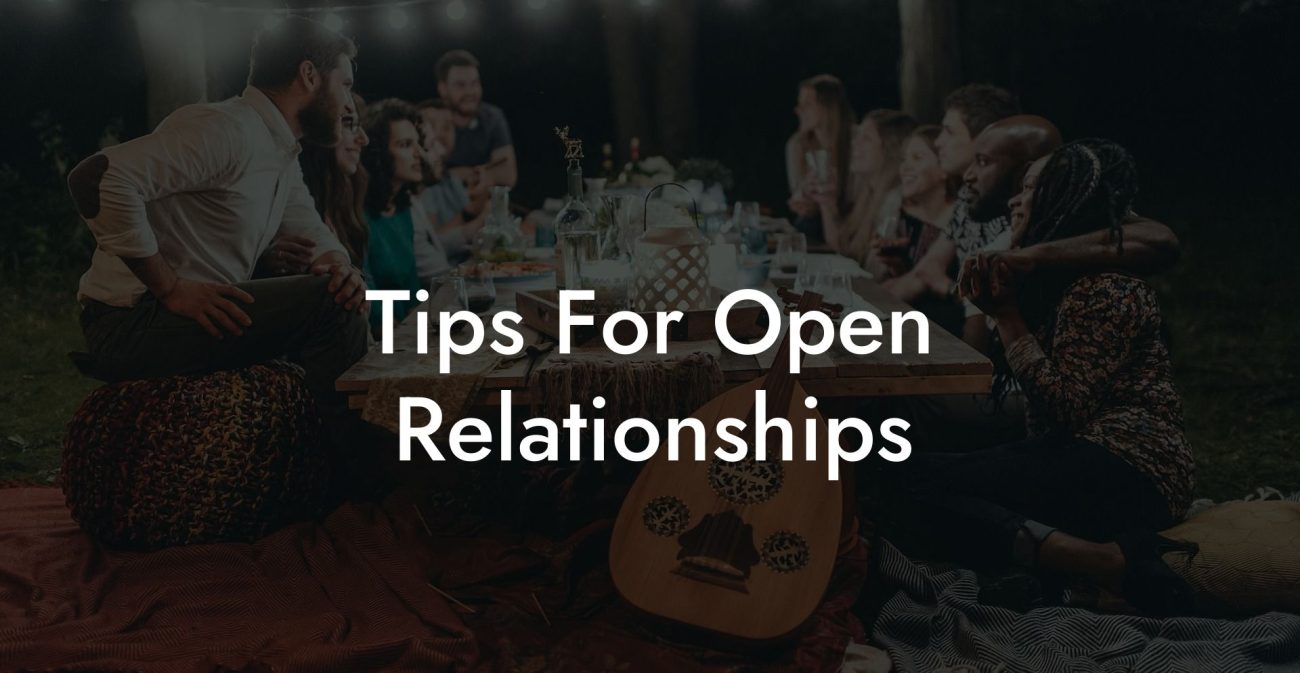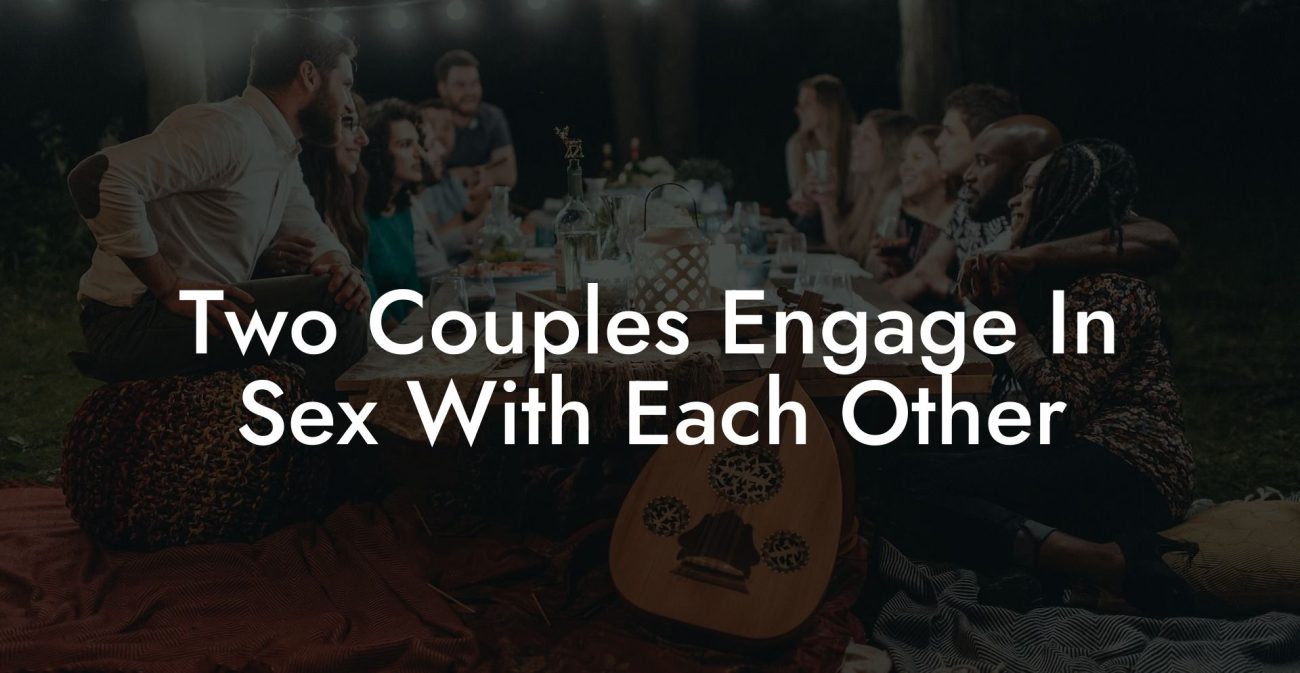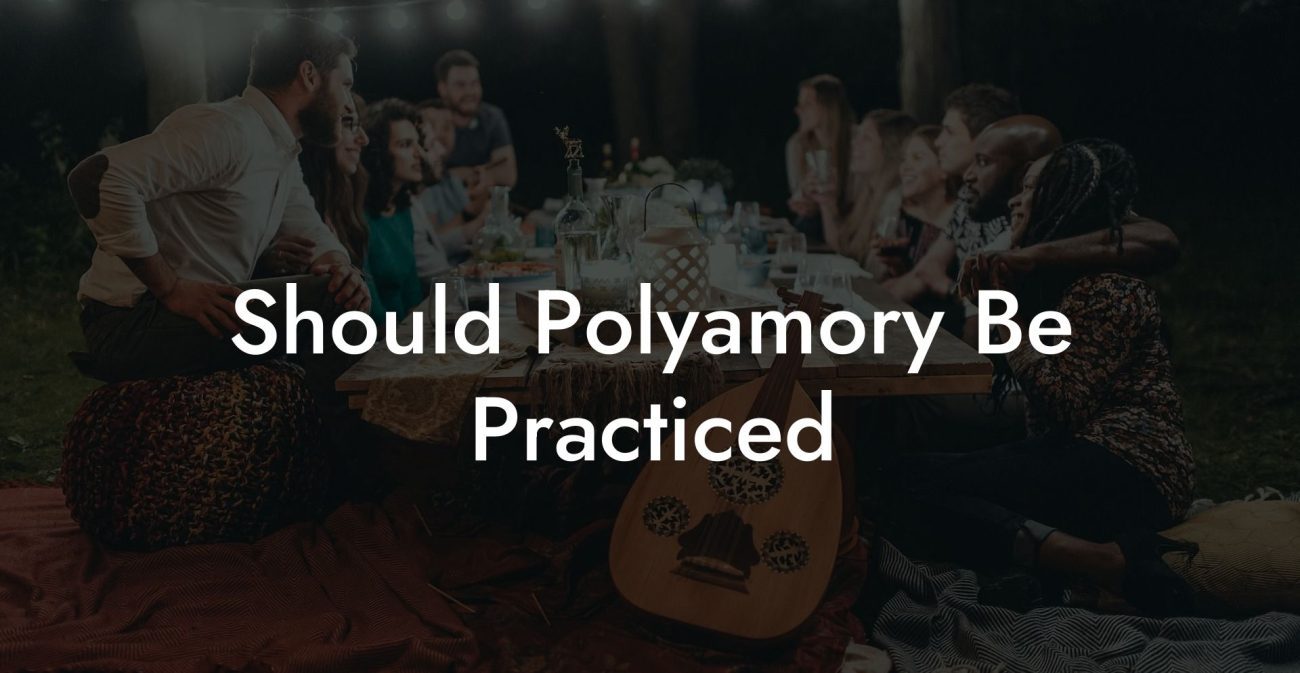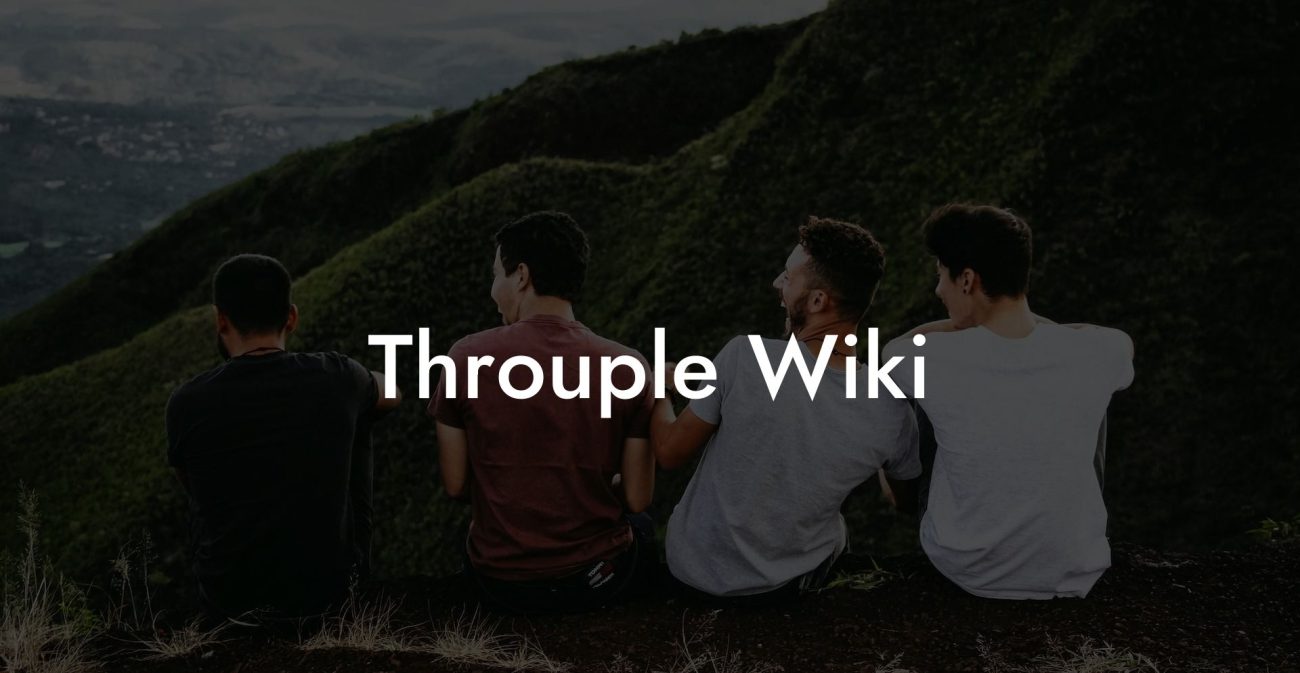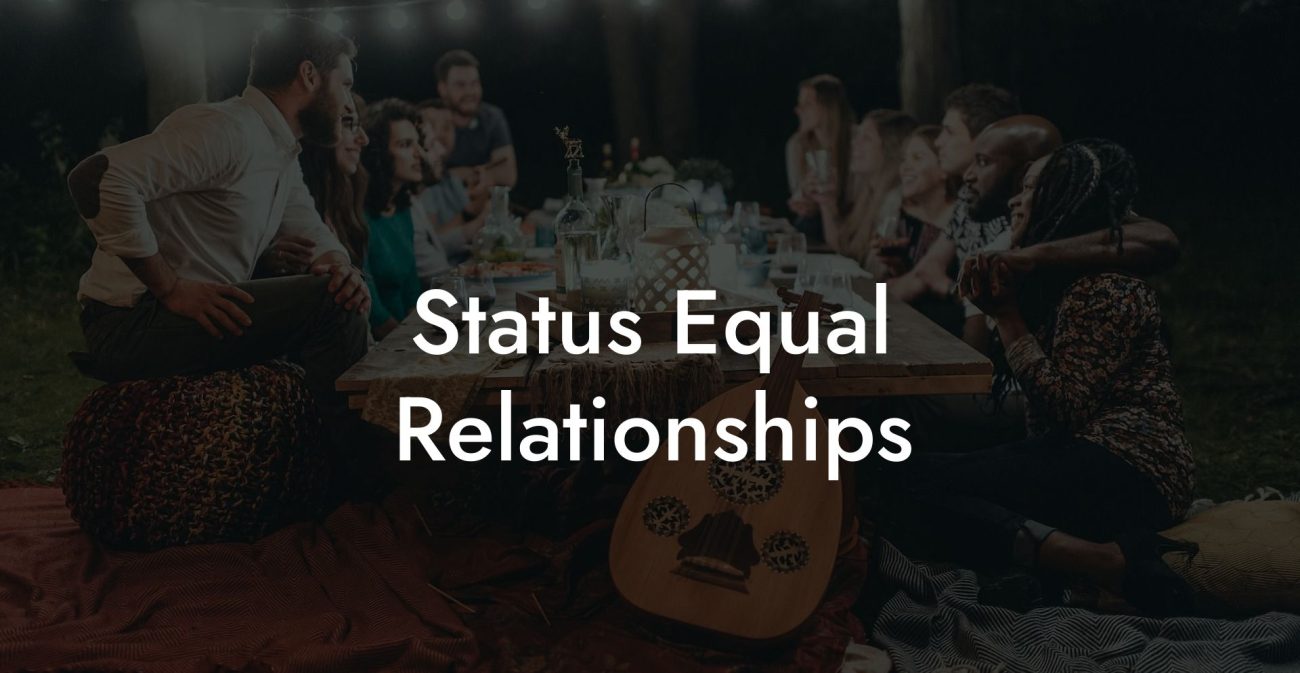Guide to Polygamy

In today’s rapidly evolving social landscape, traditional notions of monogamy are being reexamined and redefined. Polygamy, in its various forms, offers a window into diverse ways of forming family bonds, sharing love, and building communities. This guide will walk you through the definitions, historical contexts, core principles, benefits, challenges, and practical strategies associated with polygamy. Through clear explanations, real-life stories, expert insights, and actionable advice, you’ll gain a nuanced understanding of how polygamy is practiced, both in traditional societies and modern contexts.
Quick Links to Useful Sections
- Understanding Polygamy
- What is Polygamy?
- Historical Perspectives on Polygamy
- Ethical Polygamy in a Modern Context
- Legal and Cultural Context
- Legal Frameworks Surrounding Polygamy
- Cultural Attitudes and Social Stigma
- Core Principles of Polygamy
- Informed Consent and Open Communication
- Mutual Respect and Equality
- Structured Organization and Clear Boundaries
- Flexibility and Adaptability
- Benefits of Polygamy
- Emotional and Social Richness
- Enhanced Personal Growth and Self-Awareness
- Practical and Economic Benefits
- Broader Perspectives on Love and Commitment
- Challenges of Polygamy and Strategies to Overcome Them
- Managing Jealousy and Emotional Complexity
- Time Management and Resource Allocation
- Legal and Social Stigma
- Balancing Power Dynamics and Ensuring Equality
- Practical Tips for Building and Sustaining Polygamy
- Establish Robust Communication Channels
- Create Written Relationship Agreements
- Prioritize Self-Care and Individual Growth
- Utilize Community and Professional Support
- Educate Yourself Continuously
- Real-Life Stories: Experiences in Polygamy
- Case Study: Embracing Ethical Polygyny
- Case Study: A Modern Polyandrous Arrangement
- Case Study: Blending Tradition with Modernity
- Expert Insights: Perspectives on Polygamy
- Advice from Relationship Therapists
- Insights from Legal Scholars
- Perspectives from Cultural Anthropologists
- FAQ: Your Polygamy Questions Answered
Understanding Polygamy
What is Polygamy?
Polygamy is the practice of engaging in multiple marital or committed relationships simultaneously. Traditionally, polygamy is categorized into two primary forms: polygyny, where one man is married to multiple women, and polyandry, where one woman is married to multiple men. Although the term has deep historical and cultural roots, modern interpretations of polygamy often extend to any structured relationship system where a person maintains multiple long-term partnerships with the consent of all parties involved.
It is important to distinguish polygamy from polyamory. While polyamory focuses on having multiple consensual romantic or sexual relationships without the formal commitment of marriage, polygamy typically involves legal, cultural, or religious recognition. Nonetheless, both models emphasize the principles of consent, open communication, and ethical treatment of all partners.
Historical Perspectives on Polygamy
The practice of polygamy has been documented throughout history and across many cultures. In numerous traditional societies, polygamy served important social, economic, and political functions. For example, in parts of Africa, the Middle East, and Asia, polygyny was practiced to strengthen family alliances, consolidate wealth, and secure social status. Similarly, polyandry, though less common, was observed in societies where resource scarcity or environmental factors necessitated a shared household structure.
Historically, these practices were deeply intertwined with cultural and religious beliefs. While some societies viewed polygamy as a symbol of prosperity and power, others critiqued it for reinforcing hierarchical structures and gender inequalities. Today, many communities are reexamining these traditions through the lens of ethics and human rights, leading to what is often referred to as ethical polygamy.
Ethical Polygamy in a Modern Context
Ethical polygamy is a contemporary reimagining of traditional polygamous practices that prioritizes equality, informed consent, and mutual respect among all partners. Modern practitioners reject exploitative dynamics and instead advocate for relationship structures that are transparent, consensual, and flexible. In ethical polygamy, every partner is empowered to voice their needs and boundaries, and decision-making is shared collectively.
For many younger individuals seeking relationship models that align with values of social justice, autonomy, and open communication, ethical polygamy presents an attractive alternative to conventional marriage. It challenges the idea that love and commitment must be limited to one partner and instead promotes a vision of love that is abundant and diverse.
Legal and Cultural Context
Legal Frameworks Surrounding Polygamy
The legal status of polygamy varies widely around the world. In many Western countries, polygamous marriages are illegal due to laws that favor monogamous unions. In contrast, several countries in Africa, the Middle East, and South Asia have legal provisions that recognize polygamous marriages, often under religious or customary law.
Navigating the legal aspects of polygamy can be challenging. Individuals who practice polygamy in regions where it is not legally recognized may face complications regarding inheritance, child custody, and spousal rights. Legal scholars and activists continue to debate how family law should evolve to accommodate diverse relationship structures while protecting the rights of all involved.
Cultural Attitudes and Social Stigma
Cultural perceptions of polygamy are complex and often polarized. In some communities, polygamy is celebrated as a traditional practice that fosters community cohesion and economic stability. In others, it is viewed with skepticism or outright disapproval, frequently associated with patriarchal control and gender inequality.
As global conversations about relationship diversity expand, many people are working to dispel myths and challenge stereotypes associated with polygamy. Increasingly, advocates emphasize that ethical, consensual polygamous relationships can be empowering and enriching, provided they are founded on respect and equality.
Core Principles of Polygamy
Informed Consent and Open Communication
The cornerstone of any ethical polygamous relationship is informed consent. Every individual involved must willingly and knowingly agree to the relationship structure, with a full understanding of its dynamics. Open and honest communication is essential to ensure that all partners can express their needs, desires, and concerns.
Regular discussions and transparent dialogue help to prevent misunderstandings and build a foundation of trust. Whether through formal agreements or ongoing conversations, communication is key to maintaining balance and harmony in a polygamous relationship.
Mutual Respect and Equality
Mutual respect is critical in overcoming the historical challenges often associated with polygamy. Ethical polygamy demands that every partner be treated as an equal, with their contributions, opinions, and boundaries valued equally. This principle involves actively dismantling traditional hierarchies and fostering an environment where power is distributed fairly.
Establishing equality among partners not only promotes fairness but also enhances the emotional and social bonds within the relationship. When all voices are heard and respected, conflicts are more easily resolved, and collective decision-making becomes more effective.
Structured Organization and Clear Boundaries
Polygamous relationships often involve a greater level of complexity than monogamous ones. To navigate this complexity, establishing clear boundaries, roles, and responsibilities is essential. Whether through written agreements or regular meetings, a structured approach can help manage expectations and ensure that every partner feels secure.
Boundaries might include designated time for individual relationships, financial arrangements, and guidelines for conflict resolution. By setting these parameters early on and revisiting them as needed, partners can build a stable framework that supports long-term success.
Flexibility and Adaptability
No relationship remains static, and this is especially true in polygamous arrangements. Flexibility is the ability to adapt to changing circumstances, whether they involve personal growth, shifts in relationship dynamics, or external pressures. Being open to renegotiating agreements and adjusting boundaries is crucial to sustaining a healthy polygamous relationship.
Adaptability ensures that the relationship can evolve in a way that meets the needs of all partners over time. It is a recognition that life is fluid and that successful relationships must be able to respond to change with empathy and creativity.
Benefits of Polygamy
Emotional and Social Richness
One of the most compelling advantages of polygamous relationships is the potential for deep emotional and social richness. Multiple partnerships can offer a broad network of support, companionship, and shared responsibility. Each partner contributes a unique perspective and set of strengths, leading to a diverse and resilient support system.
This network can provide comfort during challenging times and amplify joy during celebrations, creating a strong sense of community and belonging.
Enhanced Personal Growth and Self-Awareness
Engaging in multiple, complex relationships fosters continuous personal development. The emotional challenges and varied interactions inherent in polygamy encourage individuals to become more self-aware, resilient, and empathetic. As you navigate different relationships, you learn to better understand your own needs, triggers, and aspirations.
This journey of self-discovery often leads to greater emotional maturity and a more authentic expression of identity.
Practical and Economic Benefits
In many traditional settings, polygamous relationships have provided practical and economic advantages. Sharing household responsibilities, pooling resources, and collaborating on family and community tasks can lead to increased stability and efficiency. Even in modern contexts, these practical benefits can relieve individual burdens and create opportunities for collective prosperity.
While economic considerations are just one aspect of polygamy, they can contribute significantly to the overall well-being of the household.
Broader Perspectives on Love and Commitment
Polygamy challenges conventional notions of love by asserting that commitment and affection are not finite resources. It opens up the possibility for love to be experienced in multiple ways simultaneously. This broader perspective encourages a more inclusive view of relationships, one that values diversity and celebrates the abundance of human connection.
By redefining the parameters of love and commitment, polygamy can inspire individuals to pursue relationships that are more aligned with their personal values and aspirations.
Challenges of Polygamy and Strategies to Overcome Them
Managing Jealousy and Emotional Complexity
One of the most significant challenges in polygamous relationships is the management of jealousy and other intense emotions. It is natural to experience feelings of insecurity or envy when multiple intimate bonds are involved. Addressing these emotions requires honest self-reflection and open dialogue with all partners.
Techniques such as regular emotional check-ins, individual or group therapy, and mindfulness practices can help manage these feelings. By confronting jealousy head-on, partners can transform potential conflicts into opportunities for deeper understanding and connection.
Time Management and Resource Allocation
Balancing the time, energy, and resources required by multiple relationships can be a daunting task. Scheduling conflicts and uneven distributions of attention may lead to feelings of neglect or resentment. To overcome these issues, it is essential to develop effective time management strategies.
Utilizing shared calendars, establishing routine “relationship meetings,” and setting aside dedicated quality time for each partnership can help ensure that every relationship is nurtured. Clear communication about scheduling and priorities is key to maintaining balance.
Legal and Social Stigma
Polygamy is often met with legal restrictions and societal disapproval, particularly in regions where monogamy is the norm. The stigma attached to polygamous relationships can lead to isolation, discrimination, and even legal challenges related to marital rights, inheritance, and custody.
Educating yourself about the legal framework in your region, seeking professional legal advice, and building a network of supportive peers are vital steps for navigating these challenges. Advocacy and community engagement can also help shift public perceptions over time.
Balancing Power Dynamics and Ensuring Equality
Historically, polygamous arrangements have been criticized for fostering unequal power dynamics, particularly when they reinforce gender hierarchies. In modern, ethical polygamy, it is essential to actively work against these imbalances. This requires a commitment to treating all partners as equals and ensuring that decision-making processes are inclusive and transparent.
Regular discussions, clear agreements, and, if necessary, professional counseling can help address and prevent issues related to power and inequality.
Practical Tips for Building and Sustaining Polygamy
Establish Robust Communication Channels
Open, honest, and continuous communication is the cornerstone of any successful polygamous relationship. Establishing regular check-ins, both one-on-one and in group settings, allows partners to express their feelings, discuss any concerns, and update agreements as needed. Consider using digital tools like shared calendars and group messaging apps to streamline communication.
Scheduling weekly or monthly relationship meetings can create a safe space for discussion and foster a sense of collective responsibility.
Create Written Relationship Agreements
Documenting the roles, boundaries, and expectations of all partners can provide clarity and serve as a reference point during times of conflict. Relationship agreements do not have to be rigid contracts; rather, they can be living documents that evolve as relationships grow and change. Regularly revisiting these agreements helps ensure that everyone’s needs continue to be met.
Prioritize Self-Care and Individual Growth
The health of any relationship is deeply intertwined with the well-being of the individuals involved. Encourage each partner to invest in self-care practices, such as exercise, meditation, creative pursuits, or therapy, to maintain personal balance. When each person feels supported in their individual growth, the collective dynamic of the relationship improves.
Remember that taking time for yourself is not selfish; it is essential for sustaining the energy and emotional resilience needed to manage multiple relationships.
Utilize Community and Professional Support
Engaging with communities that share your lifestyle can provide invaluable support, practical advice, and a sense of belonging. Whether through online forums, local meet-ups, or relationship workshops, connecting with like-minded individuals can help normalize your experiences and offer solutions to common challenges.
Additionally, seeking guidance from relationship coaches, therapists, or legal professionals experienced in non-monogamous dynamics can provide tailored advice and help address specific issues.
Educate Yourself Continuously
The landscape of alternative relationship models is constantly evolving. Stay informed by reading books, following relevant blogs and podcasts, and participating in workshops or seminars on polygamy and ethical non-monogamy. Continuous learning not only empowers you to make better decisions but also helps you articulate your lifestyle to others, thereby reducing stigma.
Real-Life Stories: Experiences in Polygamy
Case Study: Embracing Ethical Polygyny
David, a passionate advocate for ethical non-monogamy, has been practicing polygyny for over a decade. With two partners who are active participants in all aspects of the relationship, David has cultivated a dynamic where open communication and shared decision-making are paramount. Regular family meetings, transparent financial arrangements, and continuous emotional check-ins have helped the group navigate challenges such as jealousy and scheduling conflicts.
David’s experience highlights that when polygamy is practiced ethically, with clear boundaries, respect, and equality, it can lead to deeply fulfilling and resilient relationships.
Case Study: A Modern Polyandrous Arrangement
In a less common yet equally viable model, Maria is in a polyandrous relationship with two husbands. Maria and her partners have redefined traditional roles by prioritizing mutual respect, flexibility, and shared responsibilities. Despite facing external challenges such as social stigma and legal ambiguity, the trio has built a supportive network that emphasizes personal autonomy and collective well-being.
Their journey illustrates that modern polygamy, whether polygyny or polyandry, can thrive when grounded in ethical practices and open dialogue.
Case Study: Blending Tradition with Modernity
In some cultures, polygamy is a long-standing tradition. Ahmed, who comes from a community where polygyny is historically prevalent, has reimagined the practice by integrating contemporary values such as gender equality and emotional transparency. By involving all family members in decision-making processes and challenging traditional gender roles, Ahmed has created a modern polygamous household that honors both heritage and personal freedom.
This case study demonstrates that it is possible to respect cultural traditions while also evolving them to meet the demands of modern society.
Expert Insights: Perspectives on Polygamy
Advice from Relationship Therapists
Relationship therapists specializing in non-traditional family structures stress that the success of polygamous relationships relies heavily on transparency, vulnerability, and continuous communication. Therapists advise regular counseling sessions, both individually and as a group, to help navigate the complexities of emotional dynamics, jealousy, and power imbalances.
They also emphasize that fostering an environment of mutual respect and equality is essential for transforming potential conflicts into opportunities for growth.
Insights from Legal Scholars
Legal experts point out that while polygamy faces significant legal challenges in many regions, there is a growing movement toward reforming family laws to accommodate alternative relationship models. They recommend that individuals practicing polygamy educate themselves about local laws, document their relationship agreements, and seek professional legal advice when necessary.
These steps not only protect the rights of all partners but also contribute to a broader dialogue on how modern societies can embrace diverse family structures.
Perspectives from Cultural Anthropologists
Cultural anthropologists highlight that polygamy has been an integral part of many societies for centuries. They argue that understanding the historical and cultural contexts of polygamy can help dispel common stereotypes and reveal the nuanced ways in which multiple partnerships can be both functional and fulfilling. By examining the interplay between tradition and modernity, these experts offer valuable insights into how polygamy can be practiced ethically and sustainably.
FAQ: Your Polygamy Questions Answered
1. What is polygamy?
Polygamy is the practice of engaging in multiple marital or committed relationships simultaneously. It includes forms such as polygyny (one man with multiple wives) and polyandry (one woman with multiple husbands). Traditionally, it has cultural, religious, and legal dimensions.
2. How does polygamy differ from polyamory?
While both involve multiple relationships, polygamy typically refers to formal or culturally recognized unions (often involving marriage), whereas polyamory focuses on multiple consensual romantic or sexual relationships without necessarily having legal or formal commitments.
3. What are the core principles of ethical polygamy?
Ethical polygamy is founded on informed consent, open communication, mutual respect, equality among partners, clearly defined boundaries, and flexibility to adapt to changing needs.
4. What benefits can polygamy offer?
Polygamous relationships can provide emotional richness, a diverse support network, opportunities for personal growth, practical and economic advantages through shared resources, and a broader perspective on love and commitment.
5. What challenges might one face in a polygamous relationship?
Common challenges include managing jealousy and emotional complexity, balancing time and resources among multiple partners, navigating legal restrictions and social stigma, and ensuring fairness and equality in relationship dynamics.
6. How can couples in polygamous relationships overcome legal and social challenges?
Couples can overcome these challenges by educating themselves about local laws, seeking professional legal counsel, clearly documenting relationship agreements, engaging with supportive communities, and maintaining open and honest communication.
7. What practical steps can help sustain a polygamous relationship?
Practical steps include establishing robust communication channels, creating written relationship agreements, prioritizing self-care, utilizing digital scheduling tools, and seeking professional and community support.
Resources and Community Support: Your Next Steps in Polygamy
- "The Ethical Slut" by Dossie Easton & Janet Hardy – A seminal work that explores alternative relationship models and provides insights into ethical non-monogamy.
- "More Than Two" by Franklin Veaux & Eve Rickert – A comprehensive guide on managing multiple relationships with practical advice applicable to polygamy and polyamory alike.
- Podcasts: Listen to "Multiamory" and "Polyamory Weekly" for in-depth discussions on alternative relationship structures and personal experiences with polygamy.
- Online Communities: Engage with platforms such as r/polyamory or specialized Facebook groups where members share insights and support on non-monogamous lifestyles.
- Legal and Counseling Resources: Consult with professionals specializing in family law or relationship counseling to navigate the legal and emotional complexities of polygamy.
By exploring these resources and connecting with supportive communities, you can deepen your understanding of polygamy and learn practical strategies for building a fulfilling, ethical, and sustainable relationship structure. Embrace the journey with openness, continuous learning, and a commitment to mutual respect, and discover how alternative relationship models can enrich your life.
Lost & confused by all of the terms, types and seemingly made up 3 letter acronyms?? We've got you. Check out our Ethnical Non-Monogamy Dictionary >>
Useful Interruption: Not sure which relationship vibe fits you best? Take our Relationship Test, it’ll give you the real insight into your natural relationship style. Then, dive into our binge-worthy guides (from the tried-and-true to the “wait, that’s a thing?”) and find the perfect relationship type for your life:
- Monogamy
- Open Relationships
- Ethical Non-Monogamy
- Solo Polyamory
- Non-Hierarchical Polyamory
- Hierarchical Polyamory
- Relationship Anarchy
- Swinging
Now back to the main article but yeah take the test...





